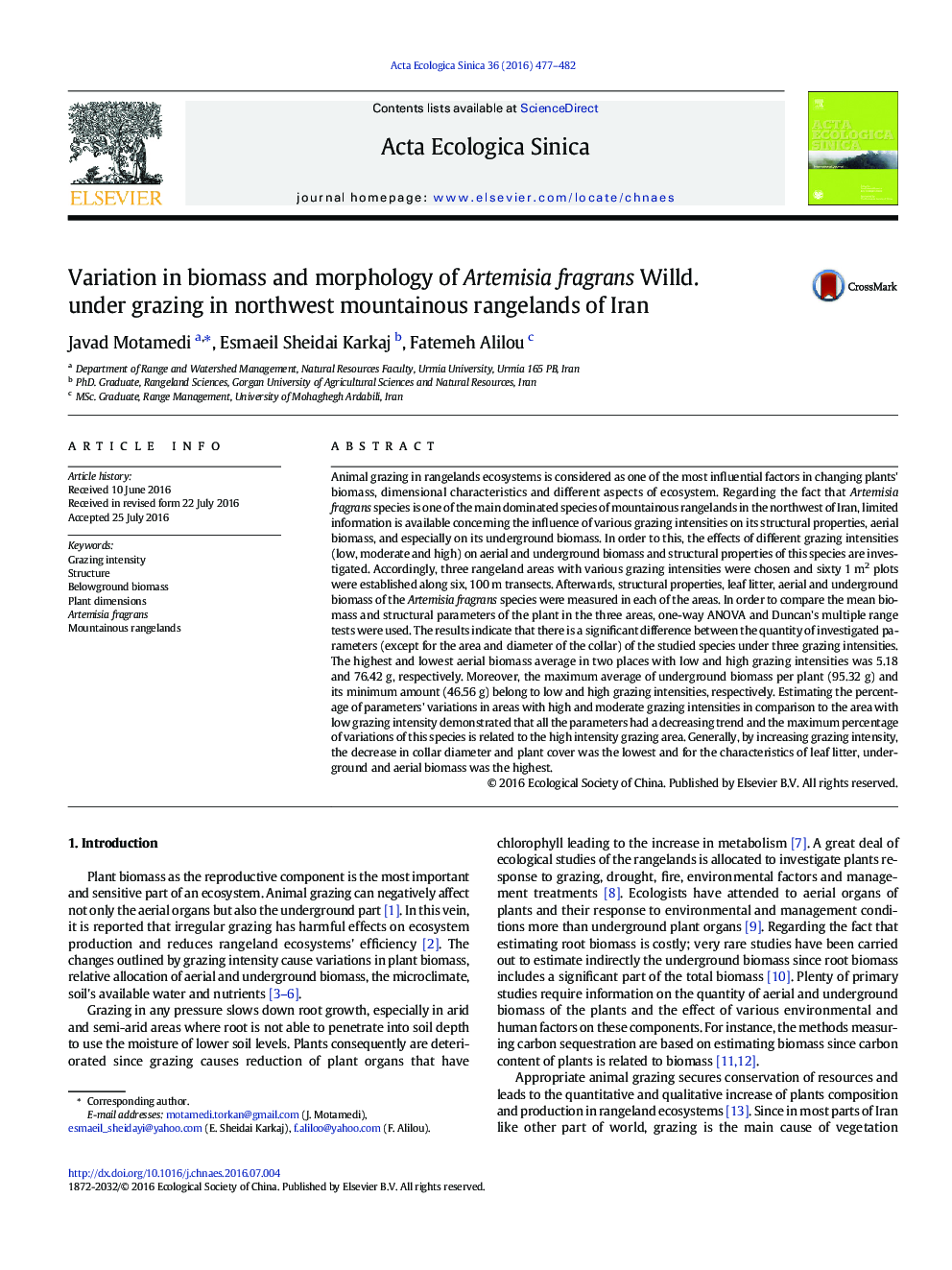| Article ID | Journal | Published Year | Pages | File Type |
|---|---|---|---|---|
| 8846422 | Acta Ecologica Sinica | 2016 | 6 Pages |
Abstract
Animal grazing in rangelands ecosystems is considered as one of the most influential factors in changing plants' biomass, dimensional characteristics and different aspects of ecosystem. Regarding the fact that Artemisia fragrans species is one of the main dominated species of mountainous rangelands in the northwest of Iran, limited information is available concerning the influence of various grazing intensities on its structural properties, aerial biomass, and especially on its underground biomass. In order to this, the effects of different grazing intensities (low, moderate and high) on aerial and underground biomass and structural properties of this species are investigated. Accordingly, three rangeland areas with various grazing intensities were chosen and sixty 1Â m2 plots were established along six, 100Â m transects. Afterwards, structural properties, leaf litter, aerial and underground biomass of the Artemisia fragrans species were measured in each of the areas. In order to compare the mean biomass and structural parameters of the plant in the three areas, one-way ANOVA and Duncan's multiple range tests were used. The results indicate that there is a significant difference between the quantity of investigated parameters (except for the area and diameter of the collar) of the studied species under three grazing intensities. The highest and lowest aerial biomass average in two places with low and high grazing intensities was 5.18 and 76.42Â g, respectively. Moreover, the maximum average of underground biomass per plant (95.32Â g) and its minimum amount (46.56Â g) belong to low and high grazing intensities, respectively. Estimating the percentage of parameters' variations in areas with high and moderate grazing intensities in comparison to the area with low grazing intensity demonstrated that all the parameters had a decreasing trend and the maximum percentage of variations of this species is related to the high intensity grazing area. Generally, by increasing grazing intensity, the decrease in collar diameter and plant cover was the lowest and for the characteristics of leaf litter, underground and aerial biomass was the highest.
Related Topics
Life Sciences
Agricultural and Biological Sciences
Ecology, Evolution, Behavior and Systematics
Authors
Javad Motamedi, Esmaeil Sheidai Karkaj, Fatemeh Alilou,
